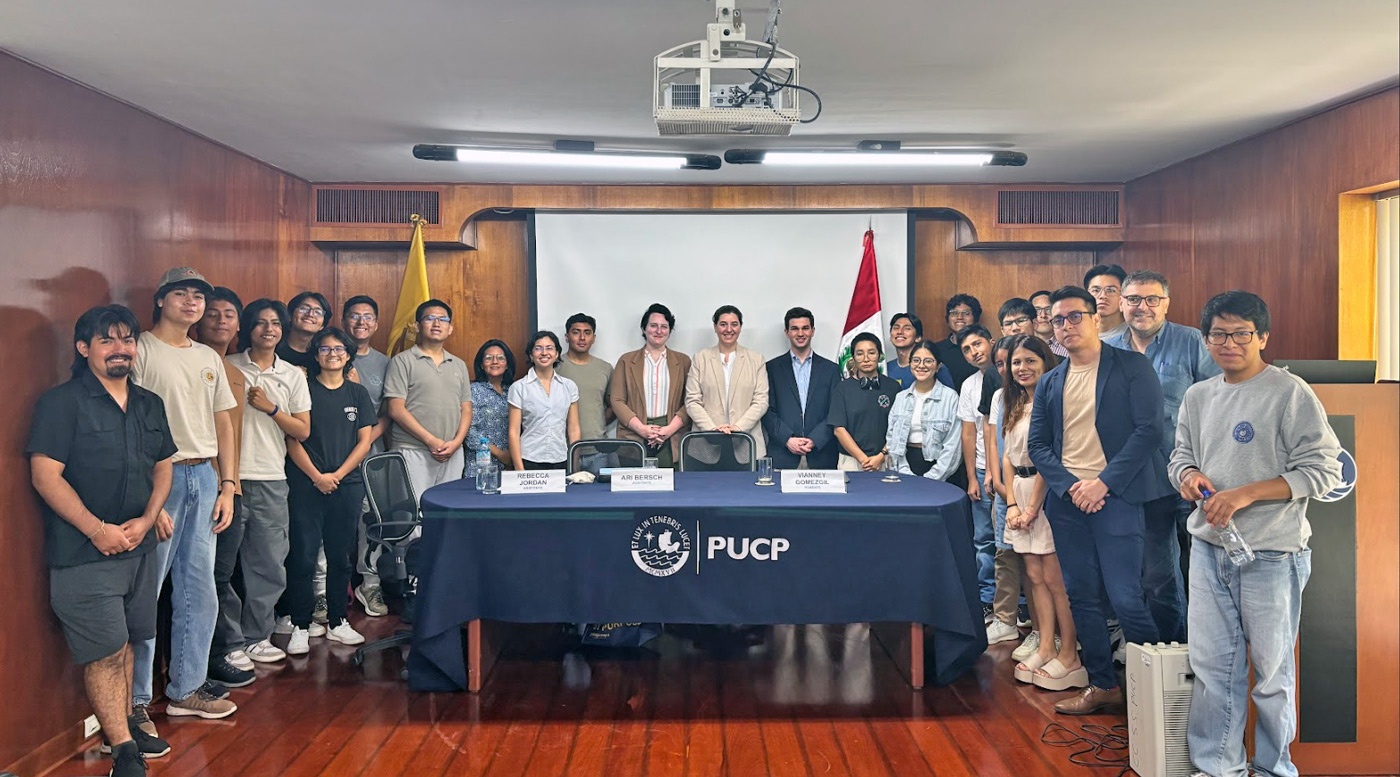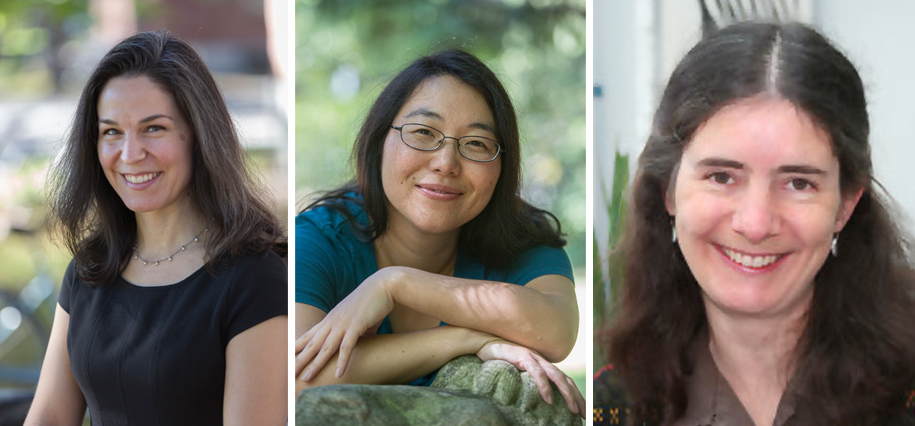Pioneering Cinema Studies Project Takes Off During Pandemic
By Tom PorterA revolutionary project for film and media studies scholars developed by faculty and staff at Bowdoin is making global waves in the academic world, buoyed in part by the ongoing pandemic.
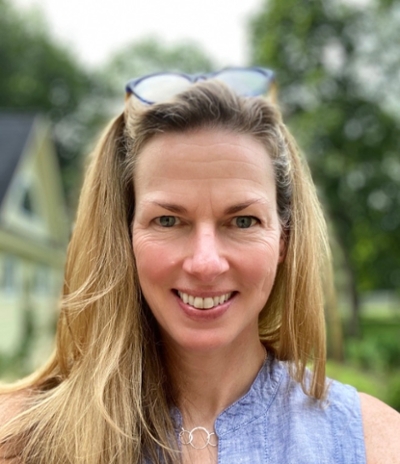
“Kinolab” is a living, online, searchable repository for narrative movie and series clips “and a great tool for teaching,” says Assistant Professor of Romance Languages and Literatures and Cinema Studies Allison Cooper. “Since we launched an updated platform in July 2020, there has been a nearly 400 percent increase in traffic.” “I have always been interested in how the digital revolution allows us to rethink film as a medium, but a special opportunity presented itself when I was researching a book on cinematic representations of the city of Rome.”
Identifying the need: “There are so many films in which Rome plays a key part that I realized I needed a quantitative way to measure them, to track what monuments were being portrayed and what cinematic techniques were being used to do that.” While a literature scholar can easily perform a keyword search to find out how many times Shakespeare uses the word “love,” for example, Cooper was frustrated that nothing like that existed for film scholars.
This realization instilled a desire in Cooper. “I envisioned a database that would allow us to find all the examples of, say, the long take in the works of Antonioni or the tracking shot in the movies of Fellini, and so on. I couldn't believe there was no way to do that and so I realized I had to invent the way myself,” she explains. It was not going to be easy.
Birth of a project: The project was christened Kinolab, from the Greek word kīnéō, meaning “to set in motion.” As the Kinolab website explains, it aims to be “the richest, most comprehensive collection of film and series clips available for non-commercial use in the United States, built from the ground up by the students and scholars using it.”
Launched as a modest digital humanities initiative, Kinolab gathered momentum after Cooper assembled a project team that includes lead faculty collaborator Fernando Nascimento (digital and computational studies), developer David Francis (academic technology and consulting), and a handful of student curators headed up by Shani Agarwal ’20. In addition to overseeing the development of a tailor-made digital platform, Cooper has spent countless hours painstakingly seeking out film clips with her student curators, digitizing them, and tagging them with “data related to the aspects of film language or techniques that are illustrated in each clip,” she says.
The issue of copyright: This was one hurdle that had to be overcome. “No one has done this type of thing before, so we needed to be careful with copyright issues and make sure we’re not abusing the ‘fair use’ doctrine” (which allows limited use of material without permission). The cause was helped in 2018 when the Library of Congress granted more freedom to use clips of films and TV shows for the purposes of criticism or commentary.
Some of the biggest challenges were technological, says Cooper. “Trying to figure out how to build the platform we needed was hard. It’s much more difficult to attach data to moving images than it is to static ones, because the things we’re interested in, like the close-up, the medium shot, and the reverse shot, for example, are embedded in time and space within the clip.”
How it works:
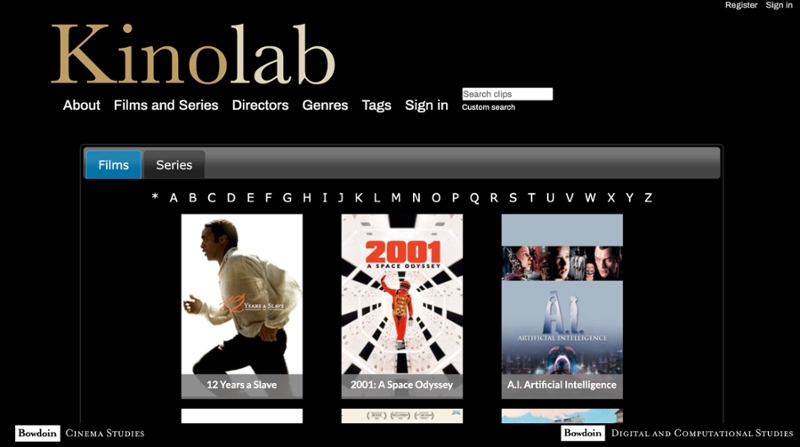
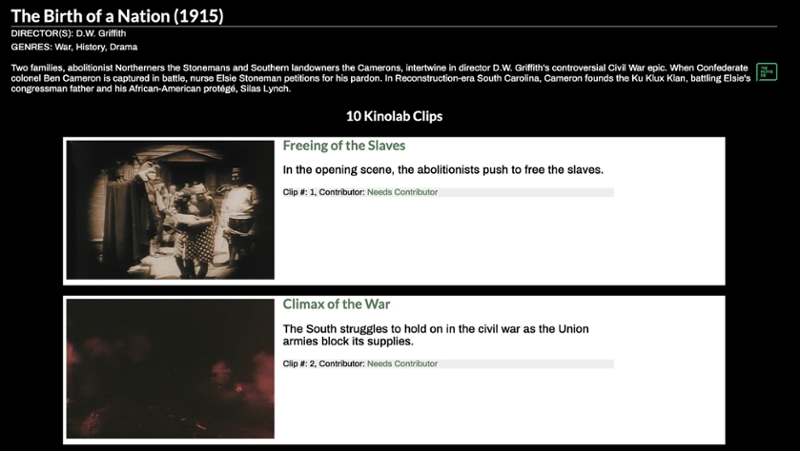
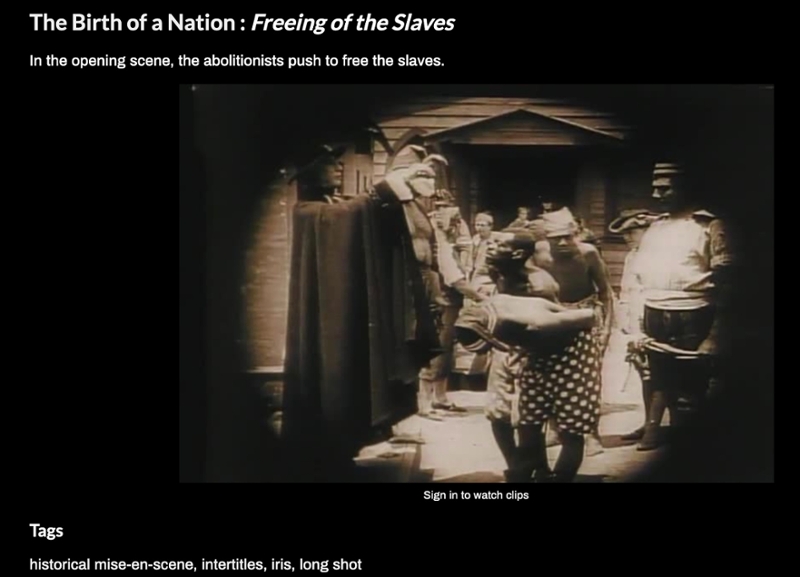
Kinolab is an open project, meaning anyone registered to the site is free to add annotated clips, although they have to be approved by one of the project’s curators. The initial content was mostly provided by Cooper and her students. To begin with, the clip database was quite “sci-fi heavy,” featuring excerpts from movies like A.I. Artificial Intelligence, Ex-Machina, and Blade Runner, as well as TV shows like Black Mirror and Humans—clips that were chosen to support Bowdoin’s ethical computing initiative. As of February 2021, however, the database had grown to cover nearly twenty genres, including animation, Bollywood, history, and thriller.
The COVID-19 pandemic has turned Kinolab into a hive of activity over the last year, says Cooper. “When it became apparent how reliant faculty would become on remote teaching, we decided to launch the updated platform in the summer, ahead of schedule.” She describes the rollout as both “exciting and terrifying.” Details were posted on social media and picked up by cinema scholars around the world, including Professor Catherine Grant at the University of London, who described it as a “must-follow project.” Grant has so many followers that Kinolab was inundated with requests from everywhere, explains Cooper. “We had so many trying to register at one point that it crashed the new platform and we had to move to an Amazon server to cope with volume.”
Growth and collaboration: Over the last six months, the number of Kinolab users has quadrupled to nearly 400. Also, thanks partly to the academic crowdsourcing that comes with this being an open project, the database now contains around 1,100 annotated film and TV clips. Furthermore, as Cooper notes, it has led to some interesting collaborations with other institutions, including Hamilton College, Colgate University, and others.
While a literature scholar can easily perform a keyword search to find out how many times Shakespeare uses the word “love,” for example, Cooper was frustrated that nothing like that existed for film scholars.
“One of the scholars we’re working with is Bruce Maxwell, director of computing programs and visiting professor of computer science at the Roux institute,” explains Cooper. Based in Portland, Maine, and part of Northeastern University, the Roux Institute specializes in the practical application of artificial intelligence and offers master’s and doctoral programs for graduates from a non-CS background. It was launched last year with an investment from David Roux and his wife, Barbara, who also funded Bowdoin’s Roux Center for the Environment.
“Professor Maxwell does a lot with machine learning, where computers use neural networks to recognize patterns and draw their own conclusions. He and his students are working with the Kinolab data set to try to train computers to recognize aspects of film language,” says Cooper. Initially, the aim is to enable computers to identify close-ups. “Close-ups come in many different types, and they’re the most tagged aspect of film language on Kinolab.”
The goal, she adds, is eventually to explore other aspects of film language, but of course not all of them can be recognized by a machine. “For example, no computer will understand the difference between graphic blocking and social blocking,” says Cooper (referring to an aspect of filmmaking having to do with where actors position themselves in the shot). “Other aspects, however, such as the long shot, could feasibly be recognized by a computer.”
The future of Kinolab: The prospect of ever-increasing amounts of data coming into Kinolab suggests that machine learning is the way forward. “We’re not there yet, but hopefully one day we can use computers to take much of the burden off human beings when it comes to identifying and tagging mountains of film and TV clips,” says Cooper. “This would allow film and media researchers to spend less time preparing data for interpretation and more time interpreting data.” In the meantime, the momentum of the last few months means the project is continuing to grow at a rapid clip: “the very best kind of problem to have,” says Cooper.


